Commander in Chief
Lincoln was a wartime president. He spent the entirety of his years in office anticipating or actively engaged in the Civil War. When he entered the White House on March 4, 1861, the nation was in crisis. Seven states (South Carolina, Mississippi, Florida, Alabama, Georgia, Louisiana and Texas) had already seceded from the Union in protest during the four months after his election. The opening salvos of the war sounded at Fort Sumter just six weeks after Lincoln assumed office, and he would be assassinated only five days after General Robert E. Lee surrendered to Lieutenant General Ulysses S. Grant four years later.
For a president with almost no previous military experience, Lincoln would prove to be a remarkably able commander in chief, learning quickly on the job. He took an active role in all military affairs, advising on the strategies of his generals, communicating with them almost daily from the War Department telegraph office, and making nearly a dozen separate visits to troop encampments on the battlefronts.
Lincoln used his executive powers at critical junctions during the war. He took bold, controversial actions, such as ordering the suspension of habeas corpus, and issuing the Emancipation Proclamation. And he did not hesitate to replace military commanders who did not meet his expectations with others who demonstrated the aggressiveness he considered necessary to win. While Lincoln’s military prowess has provoked debate over the generations, few dispute that he had an intuitive grasp of strategic concepts, and the moral courage required to make difficult decisions.
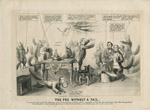 |
“The Fox Without a Tail.” Philadelphia: J.L. Magee, 1861. [zoom] By the time Lincoln took office in April of 1861, seven states had already seceded from the Union in protest. This secession cartoon depicts the elected representatives of those seven Confederate states, and compares their situation to Aesop’s fable “The Fox Without a Tail.” In that fable, a cunning fox, having lost his tail in a trap, seeks to save himself from ridicule by convincing his fellow foxes to follow suit by cutting off their tails, claiming that he had found his own to be a great encumbrance. Susan H. Douglas Collection of Political Americana |
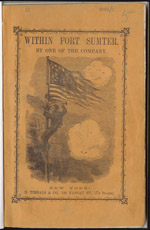 |
Within Fort Sumter, or, A View of Major Anderson’s Garrison Family for One Hundred and Ten Days by One of the Company. New York: N. Tibbals & Company, 1861. [zoom] | [read this book] The Civil War began on April 12, 1861, when Confederate forces fired upon Fort Sumter off the coast of South Carolina. Rather than vacate the contested fort on South Carolina’s demand, Lincoln held fast, prompting Confederate troops to fire the first shots of the war. Collection of Andrew Dickson White |
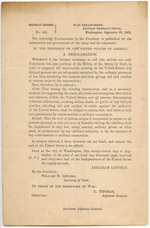 |
Abraham Lincoln. Presidential Order No. 141 Suspending Habeas Corpus. Washington, September 25, 1862. [zoom] | Additional images: 
Lincoln took bold and controversial actions that he considered necessary to preserve the Union. He suspended the writ of habeas corpus—the constitutional guarantee protecting citizens from arbitrary arrest—at multiple times and places during the war. Where the writ was suspended, officials could arrest those suspected of plotting against the federal government and incarcerate them indefinitely. Gift of Gail and Stephen Rudin |
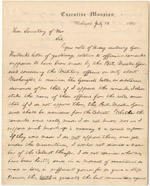 |
Abraham Lincoln. Letter to Secretary of War Edwin Stanton. Washington, July 14, 1864. [zoom] | Additional images: 
In July of 1864, Confederates burned the home of Postmaster General Montgomery Blair at Silver Spring, Maryland--in reprisal, they said, for similar actions against Confederate office holders. Angered, Blair made a heated remark about the “cowards” in the War Department who permitted such things to happen. The remarks were carried to General Halleck, and he wrote a furious letter to the Secretary of War, who turned it over to the President. This is Lincoln’s firm answer. Gift of Nicholas H. and Marguerite Lilly Noyes |
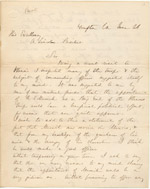 |
General George McClellan. Letter to Abraham Lincoln. June 26, [1861]. [zoom] | Additional images: 
In this letter, McClellan justifies his recommendations on promoting particular soldiers to leadership positions. Gift of Nicholas H. and Marguerite Lilly Noyes |
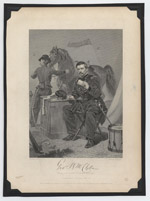 |
General George McClellan. Engraving after a Painting by Alonzo Chappel. [New York: Johnson, Fry & Co., 1862]. [zoom] George McClellan served as a Union General from May 1861 to November 1862. Lincoln became increasingly frustrated with the General’s strategy, which he found to be slow and risk-averse. The President removed McClellan from his command on November 5, 1862, after McClellan failed to pursue Lee aggressively following the Battle of Antietam. Susan H. Douglas Collection of Political Americana |
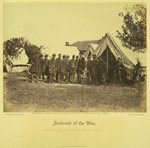 |
“President Lincoln on the Battle-field of Antietam.” Antietam, Maryland. October, 1862. From Gardner’s Photographic Sketch Book of the War. Washington: Philp & Solomons, [1865-66]. [zoom] On October 1, 1862, two weeks after the Battle of Antietam, President Lincoln visited the Army of the Potomac at its encampment near Harper’s Ferry. Gift of Thomas A. Mann ’64 and Diann Goodman Mann ’66 |
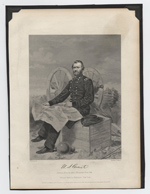 |
General Ulysses S. Grant. Engraving After a Painting by Alonzo Chappel. [New York: Johnson, Fry & Co., 1862]. [zoom] Lincoln named Ulysses S. Grant as commander of all the federal armies in March of 1864. At last, in Grant, Lincoln found a leader willing to move with the speed and aggressiveness he believed necessary to win the war. Susan H. Douglas Collection of Political Americana |
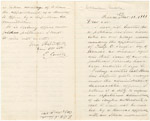 |
Ezra Cornell. Letter to Abraham Lincoln. March 11, 1861. [zoom] | Additional images: 
Lincoln was a surprisingly accessible president, meeting almost daily with anyone who came to see him. He also received an estimated 200 letters each day from concerned citizens on innumerable topics. In this letter Ezra Cornell urges Lincoln not to appoint Philip Schuyler as Indian Agent, because Schuyler is a Democrat. Lincoln was likely already aware of Schuyler’s party preference. Like many politicians, he bestowed more political appointments on his friends than on his enemies, hoping to win their loyalty. |
View an image of this exhibition case: 1